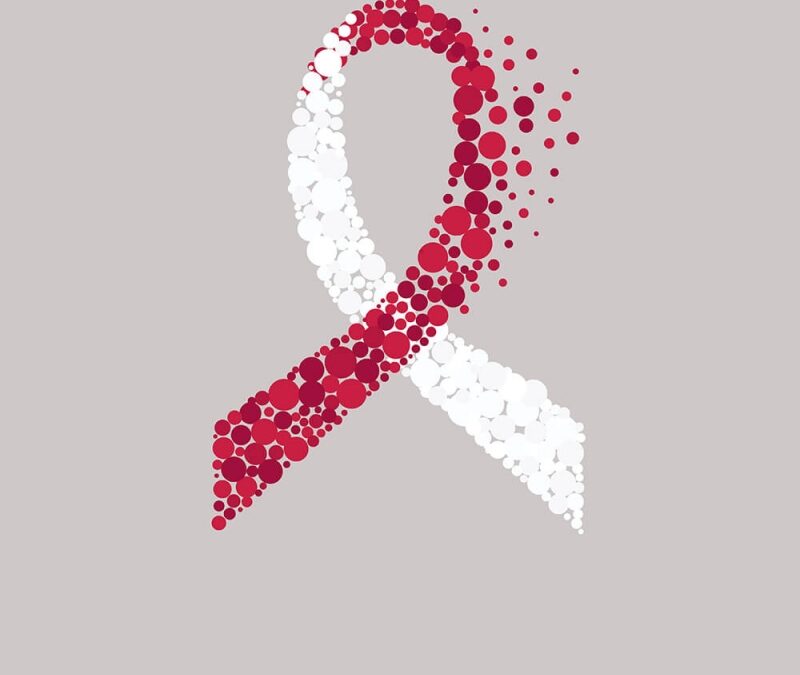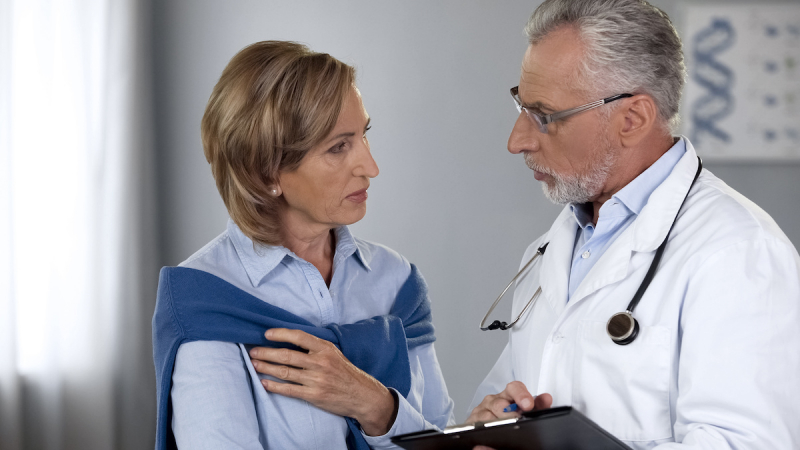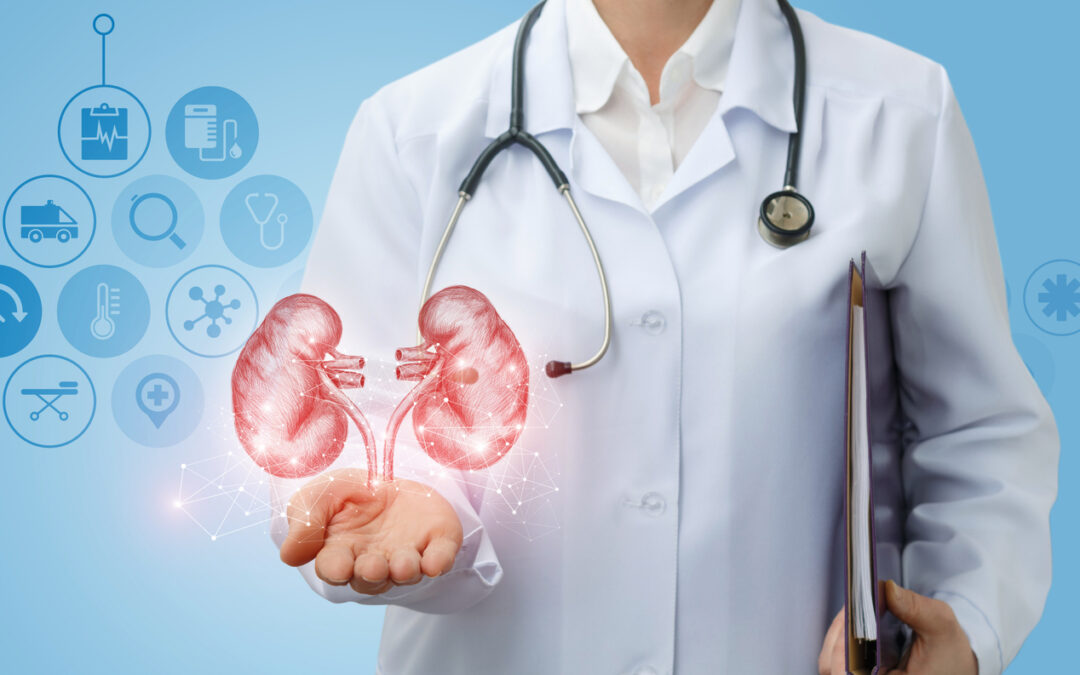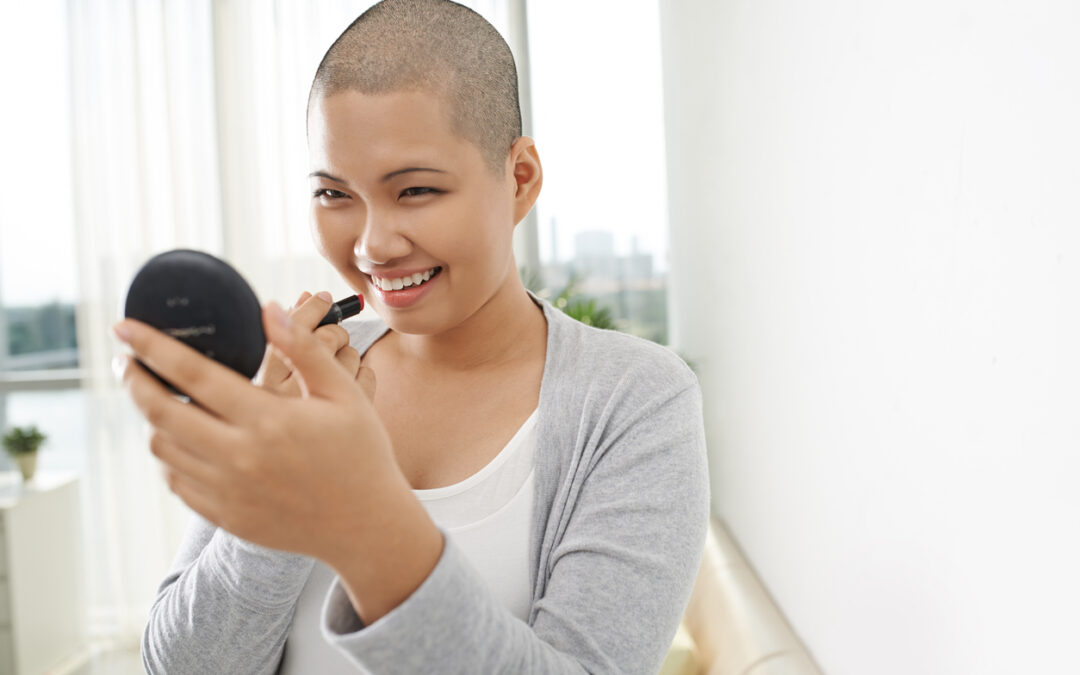
Apr 3, 2023 | Southern Arizona
April is Head and Neck Cancer Awareness Month. Head and neck cancers are a group of different types of cancers that develop in the throat, nose, mouth, sinuses, or larynx.
Types of Head and Neck Cancer
Head and neck cancers include:
- Laryngeal and Hypopharyngeal Cancer. Laryngeal cancer develops in the voice box, or larynx. Hypopharyngeal cancer develops in the lower throat.
- Oral Cavity and Oropharyngeal Cancer. Oral Cavity cancers occur in the mouth and tongue. Oropharyngeal cancer starts in the middle part of the throat, behind the mouth.
- Nasopharyngeal Cancer. Nasopharyngeal cancer starts in the upper part of the throat, behind the nose.
- Nasal Cavity and Paranasal Sinuses Cancer. Nasal cavity cancer starts in the nasal cavity, the opening behind the nose. Paranasal sinus cancer starts in the sinuses.
- Salivary Gland Cancer. Salivary gland cancer starts in the glands that produce saliva, located inside and near the mouth.
Risk Factors for Head and Neck Cancer
Not all Head and Neck Cancers can be prevented, but some outside factors are strongly linked to the disease.
Alcohol and Tobacco Use
Cancers of the oral cavity, hypopharynx, and the voice box are linked to alcohol and tobacco use. This includes exposure to secondhand smoke and chewing tobacco. People who use both tobacco and alcohol have a greater risk of developing head and neck cancers than those who drink alcohol or use tobacco alone. Reducing or eliminating consumption of alcohol and tobacco products, or limiting secondhand tobacco exposure, may reduce cancer risk.
Human Papillomavirus (HPV)
The HPV virus has been linked to cancers found in the back of the throat, on the base of the tongue, and on the tonsils. HPV may cause up to 70% of oropharyngeal cancer cases in the United States. The HPV vaccine for cervical cancer also protects against the types of HPV known to cause oropharyngeal cancers. HPV infection risk can also be lowered by consistent and correct usage of condoms and dental dams.
Other Factors
Head and neck cancers may also be caused by other factors like radiation exposure or Epstein-Barr virus infection. Genetics may also play a role.
Signs and Symptoms of Head and Neck Cancer
Signs and symptoms of head and neck cancers vary depending on the location and type of cancer, but may include:
- Mouth sores that won’t heal
- Red or white patches on gums
- A lump, thickening, or mass in the cheeks or neck
- Trouble chewing or swallowing
- Tongue numbness
- Voice Changes
- Difficulty moving tongue or jaw
These symptoms may also be caused by other, less serious conditions. Speak to your doctor or dentist if you develop these symptoms and have any concerns about head and neck cancer.
How is Head and Neck Cancer Treated?
A treatment plan will depend on the type and location of the cancer as well as factors like the stage of the cancer, the patient’s age, and their overall health. Treatment options may include:
- Radiation therapy
- Targeted therapies
- A combination of the above treatments
Radiation therapy may be recommended as the primary treatment for head and neck cancer, or in combination with other treatments, such as surgery or chemotherapy. The following types of radiation therapy may be used:
- External Beam Therapy (EBT). This form of radiation therapy delivers a beam of high energy x-rays to the tumor using a machine outside the body.
- Intensity Modulated Radiation Therapy (IMRT). This is a type of external radiation therapy that uses advanced technology to accurately direct the radiation beams at the tumor, avoiding healthy cells.
- Internal Radiation Therapy. Also called brachytherapy, this form of radiation is given through an implant that is placed in your body, near the tumor.
Head and neck cancer treatment is done to either remove the disease or control the growth of the disease. Care is also taken to preserve the function of the affected areas as much as possible and to provide support to help the patient return to normal activities as soon as possible.
Head and Neck Cancer Treatment at Arizona Oncology
At Arizona Oncology, we take a multidisciplinary approach to cancer care, ensuring you receive premier, evidence-based care close to home. Our doctors and support staff take a patient-centered approach, listening to you and helping you navigate your cancer journey every step of the way. If you would like to make an initial appointment or schedule a second opinion with one of our oncologists across the state of Arizona, visit our portal or call one of our locations directly.

Mar 27, 2023 | Southern Arizona
Inflammatory breast cancer is a rare but aggressive form of breast cancer. This cancer, which accounts for 1% to 5% of all breast cancer diagnoses in the United States, forms in the cells that line the breasts’ milk ducts, but quickly spreads to nearby lymph nodes and sometimes, to other tissues in the body. The cancer is called “inflammatory” because the cancer cells usually block the lymph vessels in the breast. This blockage causes a buildup of fluid, which then leads to inflammation that is usually red and tender to the touch.
How Does Inflammatory Breast Cancer Differ From Typical Breast Cancers?
Compared to slower-growing forms of breast cancer, inflammatory breast cancer progresses and spreads through the body quickly. In some cases, it spreads in a matter of months or even weeks. Inflammatory breast cancer is also harder to treat than other breast cancers since it has usually spread to distant parts of the body (metastasized) by the time it is diagnosed. Traditional treatments for breast cancer (such as hormone treatment using the drug tamoxifen) aren’t effective treatments for inflammatory breast cancer. Breast cancer specialists report that inflammatory breast cancers are usually diagnosed more frequently in younger patients than other breast cancers. This type of cancer is also more common in women of African-American descent and people who are obese.
Signs and Symptoms of Inflammatory Breast Cancer
Inflammatory breast cancer can be hard to diagnose because it often doesn’t cause a breast lump like other types of breast cancer. This means inflammatory breast cancer may not be detected on a mammogram.
The most common symptoms of inflammatory breast cancer include:
- Swelling of the breast
- Tenderness or itching of the breast
- Redness involving one-third or more of the skin, on or around the breast
- Hardening of the breast
- Pitting or ridging of the skin of the breast (texture resembling an orange peel)
- Affected breast feels warmer or heavier than your other breast
- Swollen lymph nodes beneath the arm or near the collarbone
- Inverted nipple (especially if that was not typical for you)
If you have any of the signs or symptoms listed above, that doesn’t mean you have inflammatory breast cancer. The symptoms of inflammatory breast cancer are very similar to other more common breast infections. However, you should make an appointment with your primary care physician right away for evaluation.
How is Inflammatory Breast Cancer Diagnosed and Treated?
Inflammatory breast cancer spreads rapidly. Your doctor may first suspect you have a breast infection and prescribe antibiotics if you are exhibiting any symptoms of inflammatory breast cancer. Because inflammatory breast cancer spreads rapidly, it is important to follow up with your doctor if your symptoms don’t improve within 7 to 10 days. If your primary care doctor suspects you might have breast cancer, he or she will refer you to a breast cancer specialist.
If an oncologist suspects inflammatory cancer, he or she will most likely order a biopsy and imaging tests, such as a mammogram or an ultrasound.
If cancer is detected, CT scans, lymph node biopsies, and bone scans are used to stage the cancer and find out if it has spread to other parts of the body. Treatment for inflammatory breast cancer depends on how advanced the disease is. Breast cancer doctors generally treat inflammatory breast cancer first with chemotherapy, then with surgery to remove the tumor, followed by radiation therapy treatment. In regards to treating inflammatory breast cancer specifically, this multimodal approach has been shown to be most effective.
If you or a loved one has been diagnosed with inflammatory breast cancer or any type of breast cancer, you undoubtedly have many questions. If you are researching your options for breast cancer treatment, we encourage you to contact the location nearest you.
Originally posted in 2019, updated in 2024.
Sources:

Mar 23, 2023 | Southern Arizona
Kidney cancer is among the 10 most common cancers in both men and women. March is Kidney Cancer Awareness Month and Arizona Oncology, a practice in The US Oncology Network, encourages men and women to speak with their healthcare providers about the symptoms, risk factors and treatments for the disease. Also known as Renal Cell Carcinoma (RCC), kidney cancer is among the 10 most common cancers in both men and women.
The rate of new kidney cancers has been on the rise since the 1990s. Most likely this is due to improved technology such as CT scans which now help locate cancers that were not previous identified. The death rates for these cancers continue to decrease, making early diagnosis key to both treatment and survival.
More than 600,000 kidney cancer survivors are living in the United States today, according to healthline.com. Recent advances in diagnosis, surgical procedures and treatment options provide patients new hope to manage and live with the disease, with a high quality of life.
Based on American Cancer Society estimates, about 81,800 new cases of kidney cancer will occur this year, and more than 14,000 people will die from the disease. Most people with kidney cancer are older, with an average age of 64. Overall, the lifetime risk for developing kidney cancer is about 1 in 43 for men and 1 in 73 for women.
Factors that increase the risk of kidney cancer include:
- Smoking, which can double the risk of the disease
- Regular use of nonsteroidal anti-inflammatory drugs (NSAIDs), which may or may not increase the risk by 51%
- Obesity
- Faulty genes
- A family history of kidney cancer
- Having kidney disease that needs dialysis
- Being infected with Hepatitis C
- Previous treatment for testicular cancer or cervical cancer
In addition to being aware of the risk factors of kidney cancer, Arizona Oncology reminds all men and women to speak with their healthcare providers about this disease during their annual exams.
Originally posted 2015. Updated March 2024.

Mar 22, 2023 | Southern Arizona
At Arizona Oncology, we understand that cancer impacts every aspect of our patients’ lives, with effects that can last for a long time after initial therapy is completed. Here we answer some common questions about cancer survivorship and our survivorship program.
Am I a cancer survivor?
If you have been diagnosed with cancer, yes! You are considered a cancer survivor from the day of your diagnosis until the day of your death from any cause. You do not have to wait for a certain number of years, or be considered free of disease, in remission, or cured to be a cancer survivor.
What are some challenges that cancer survivors face?
Our survivors can experience the effects of cancer and cancer treatment in nearly every domain of their lives, including physical, emotional, financial, and spiritual. Some of these issues include fatigue, body image problems, nutritional alterations with weight gain or weight loss, sexual dysfunction, insomnia, fear of recurrence and worsening depression and anxiety. Certain chemotherapy treatments are known to increase risks for cardiovascular or lung disease or promote the development of secondary cancers. The experience of individual survivors is unique, however, and varies a lot from survivor to survivor; it is not uncommon that two cancer survivors of a similar age and cancer diagnosis have very different longterm effects and concerns following treatment. The challenges faced by survivors can depend on the diagnosis and treatments received, age at diagnosis, other co-existing health issues, individual coping skills and quality of a support network among other factors. This is why having a personalized survivorship visit and care plan is so important.
What will happen during my survivorship clinic visit?
First, we will review your diagnosis, cancer treatments received and any related symptoms or health issues you are experiencing. I prepare a written treatment summary and care plan for all survivors, which many patients find useful. This document outlines the frequency of follow up, the potential long term risks or complications which may occur, and what to expect going forward with your ongoing care, including expected schedule for follow up imaging, doctor visits and/or blood work. I also send the treatment summary and care plan to primary care providers, as keeping your relationship with a primary care provider is an essential component of healthy survivorship.
At your visit, we will also discuss wellness, quality of life and healthy lifestyle recommendations. We review schedules for cancer screening tests and vaccinations. Survivorship care is very much guided by to your personal situation and health goals. For example, I may assist one survivor with tools and prescription medicines to help with quitting smoking, while another survivor may be dealing with marital stress and need a referral for counseling. It is my goal that all cancer survivors have the tools and resources necessary to achieve the best health possible, so we often discuss nutrition, stress reduction techniques, and benefits of exercise. I also assist my patients in connecting with local community organizations, support groups, and other medical specialists as needed.

Mar 16, 2023 | Southern Arizona
When your oncologist gives you a diagnosis of cancer, there are many things that begin to happen. You may need to arrange further doctor’s appointments and tests before your treatment plan begins. You’ll be feeling a lot of emotions and your mind may bounce in different directions.
One thing you may wonder is how to tell your family and friends that you have cancer. This is a personal experience for you, and you must do what feels most comfortable to you. Here are some things to consider before talking to friends and family.
Who Are You Going to Tell?
It’s okay to not tell everyone you know about your cancer diagnosis. It’s up to you to decide who you want to share the news with and who you don’t. Of course, there are people that will need to know at some point in the near future.
There will be close friends and family that you need to tell in person and others that you can talk to about your diagnosis over the phone or by email. It’s beneficial to make a list and ensure you tell everyone that you want to know.
When it comes to the workplace, you don’t have to tell everyone in the office. However, you need to sit down with someone in human resources (HR) and let them know. It’s probably beneficial to include your immediate supervisor at this meeting. In the coming weeks and months, you’ll need to take time off for treatments, so you can go ahead and fill out any necessary paperwork.
Prepare Yourself for Talking to Others
As you prepare to talk to others about your cancer diagnosis, it’s a good idea to determine how you feel about it. There isn’t one right way to feel. You may feel shocked, angry, numb, scared, and any number of other things. Once you know how you feel, you’ll be in a better position to let your friends and family know how they can help you, and that’ll be one of their first questions.
Selecting a time and place to tell your family and friends can be a challenge. You don’t want to announce it during your cousin’s daughter’s birthday party. You might consider scheduling a time for them to come to your home for the discussion.
You want to decide how you want to tell them. Do you want to take a direct approach or lead in to more gently? You might consider practicing a few times before telling someone. Imagine what you’ll say and what they’ll say.
Just remember, you don’t have to tell anyone until you’re ready.
What Details Do You Want to Share?
Once you announce you have cancer, your friends and family will have questions. It’s up to you to decide how much you’re comfortable sharing. From treatment to prognosis, your friends are going to want all the details. It’s beneficial for you to decide how much you want to share with each person before you break the news to them.
You might consider the idea of different levels of sharing. For instance, you might tell your immediate family everything, while only telling the extended family about possible treatment plans. Casual friends and co-workers might only know that you have cancer and that you’re pursuing several different treatment options. You need to be comfortable sharing the information that you do provide.
How to Handle Offers to Help
The truth is that there will probably come a time when you will need help during your treatments. While you might not need anything now, you might leave the door open for future offers.
It’s a good idea when accepting offers of help to match offers with the person’s strengths. For example, if your best friend asks how she can help, and your kids all play on the same soccer team, perhaps, you can ask her to take over carpool duty for a couple of months. Perhaps, your neighbor loves to cook, and you find yourself too sick to cook after treatment. You could ask your neighbor to make a meal for your family on treatment nights.
However, you need to set your boundaries. If you’re uncomfortable with accepting help from some people, then don’t. While everyone wants to help, you don’t have to accept it.
What to Do When Someone Says Something Unhelpful
Almost everyone you tell loves you and only has the best motives, but sometimes, someone is going to say something unhelpful. They may talk about how a friend of a friend was part of a cancer trial and lived forever. Of course, it was probably a different type of cancer and forever is a long time. The person means well, but you don’t need to hear it.
It’s a good idea to respond politely and firmly to unhelpful statements. You might not be ready to talk about an issue, and it’s okay to let the person know that you appreciate their concern, but you aren’t ready yet. You can leave it open-ended to future discussions if you like. Once again, you should only talk about things that you’re comfortable talking about.
Things to Avoid When It Comes to Relationships and Friendships
When you were just recently diagnosed with cancer, it’s a stressful time for you and for your friends and family. It’s easy to let your emotions take over the conversation and for triggers to send you into bouts of tears. However, you don’t want to push your friends and family away. You want to build and strengthen these relationships.
It’s a good idea to avoid saying harsh things. You can also take a few minutes to think before you speak. You don’t want to pull back and isolate yourself from your normal activity and the people who love and support you the most.
At Arizona Oncology, we understand how you feel when you first receive your diagnosis of cancer. We can help you navigate treatment and know how important your support system of family and friends is to your treatment. Remember, don’t let anyone rush you to tell others or make you accept help when you don’t want it. Do everything on your schedule.
At Arizona Oncology, we understand how you feel when you first receive your diagnosis of cancer. Not only can we help you navigate treatment, we also know how important your support system of family and friends is to your treatment. You have control of your care but also communication. Remember, at Arizona Oncology, we are here for you.

Mar 15, 2023 | Southern Arizona
Cancer patients can greatly benefit from integrative (sometimes called “alternative”) therapies along with their medical treatments. Touch therapies like acupuncture, massage, manual lymphatic drainage, and reflexology can help with side effects of cancer treatment and also reduce pain and stress.
It is always important to talk to your doctor about any alternative therapy before starting it, as not all alternative therapies are recommended for all patients. Here is a list of Arizona Oncology Foundation’s approved touch therapies you can discuss with your doctor.
Acupuncture
Acupuncture is a form of traditional Chinese medicine that has been used for thousands of years. Based on the concept of energy (chi or qi) passing through certain pathways in the body (meridians), acupuncture is believed to help re-balance energy flow in the body.
Acupuncture has been shown to help with a number of side effects of cancer treatment, including:
- Nausea and indigestion
- Diarrhea and constipation
- Anxiety and depression
- Fatigue
- “Chemo brain”
- Peripheral neuropathy
- Pain
- Sinus congestion
- Hot flashes and night sweats
- Joint and muscle stiffness
A trained acupuncture practitioner places very thin, delicate needles into specific areas of your skin. In many cases, you won’t feel them, but be prepared for a slight prick. The needles are left in place for a period of time while you relax. In some cases, mild electrical pulses are applied through the needles. You may have slight bleeding when the needles are removed.
Massage
Massage uses the power of touch for healing, applying pressure to soft tissues and pressure points throughout the body. While there are many types of massage, oncology massage therapists are trained to perform massage in a way that is safe and comfortable for cancer patients.
Many studies have found oncology massage to be helpful in combating:
- Stress and anxiety
- Depression
- Pain
- Nausea
- Fatigue
- Poor circulation
- Reduced mobility
Massage can be a very comforting, relaxing, and therapeutic accompaniment to your treatment.
Manual Lymphatic Drainage
Manual lymphatic drainage is a special form of massage used to treat lymphedema. Lymph nodes damaged by cancer treatment can stop the normal flow of lymph in the body, causing fluid retention and symptoms like swelling, pain, heaviness, tightness and hardening of tissues.
Manual lymphatic drainage is a gentle, relaxing practice involving circular, upward movements that encourage healthy lymph flow. Because the targets of lymphatic drainage are just under the skin, this type of massage does not affect deep tissues. In this way, manual lymphatic drainage offers many of the same benefits as oncology massage.
Reflexology
Reflexology is a form of touch therapy applied to the feet. An ancient practice, its history is difficult to pinpoint, but the underlying theory is that specific areas of the feet are linked to certain organs or areas of the body. By applying pressure to “reflex areas”, the reflexologist works to remove energy blockages in the corresponding area of the body.
Reflexology has been shown to help with:
- Circulation
- Pain
- Neuropathy
- Fatigue
- Nausea/vomiting
- Hair loss
- Appetite loss
- Sore mouth
- Skin reactions
- Stress relief
Reflexology is not appropriate for all patients, including those at risk for deep vein thrombosis, or those with bruising or severe edema in the feet.
Reiki
Reiki is a Japanese form of energy work where the practitioner uses his or her hands to convey universal energy to the patient. Many patients experience a subtle warmth, tingling, or sensation of pressure during reiki sessions and find it very comforting. Reiki can help with pain, anxiety, and side effects from cancer treatment. It can also help patients gain resilience in the physical, mental and spiritual aspects of facing cancer.
CranioSacral Therapy
CranioSacral therapy is a safe, noninvasive therapy that involves light touch applied to the bones of the head, sacrum (lower back), and spinal column. Through gentle compression (about the weight of a nickel), craniosacral therapy aims to release restrictions in the soft tissues around the nervous system. For cancer patients, it has been shown to:
- Improve immune function
- Decrease stress
- Decrease side effects of pain, nausea, headaches, and fatigue
- Increase tolerance of physical activity
- Improve sleep
- Zero Balancing
Developed by osteopathic physician Dr. Fritz Smith, zero balancing involves special touch aimed at balancing body structures and energy. Finger pressure and gentle traction are applied to bones, joints, and soft tissue, helping to release tensions deep in the body so it can relax and reorganize. Zero balancing has been shown to reduce stress, improve vitality, and adjust bone alignment. After a zero balancing session, you may feel lighter, freer, and more energized.
To learn more about alternative therapies and other support services that can help you in your cancer journey, speak with your doctor or contact the Arizona Oncology Foundation at 520-324-2840.








